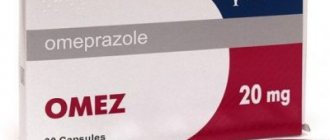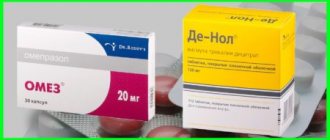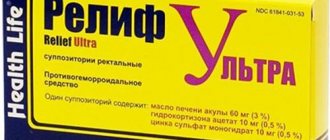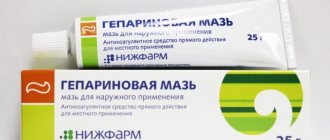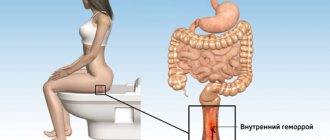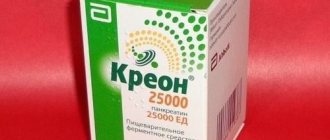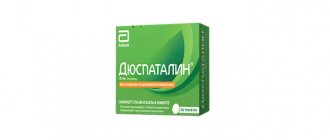Nolpaza is a medicine that contains pantoprazole. One bottle contains 40 mg of the main potent substance. Mannitol, sodium citrate, sodium carbonate, calcium stearate are added as auxiliary components. This medicine is intended for the treatment of peptic ulcers, gastroesophageal reflux disease. It is a proton pump inhibitor.
Composition and release form
The drug is produced in the form of tablets, which are additionally coated. It quickly dissolves in the stomach when interacting with water. The active substance is pantoprazole sodium sesquihydrate. The drug has a dosage of a potent substance of 20 and 40 mg.
The medicine is produced in the form of a lyophilisate , which is intended for preparing a solution. It is administered intravenously. One bottle contains 40 mg of a potent substance. The tablets are oval in shape, the shell is yellow-brown. The lyophilisate has a white or yellowish color.
Pharmacodynamics and pharmacokinetics
When Nolpaza tablets enter the stomach, they dissolve and block the synthesis of hydrochloric acid. As a result of this action, the level of basal secretion of hydrochloric acid in the human body decreases. After consumption, the maximum effect is achieved within two hours. The potent substance does not slow down the motility of the gastrointestinal tract.
After completion of treatment and administration of the drug, secretory activity is restored after 4 days. During the period of therapy, the level of serum gastrin concentration in the body increases because the production of hydrochloric acid decreases. High chromogranin content can lead to a deterioration in diagnostic accuracy, which is aimed at identifying neuroendocrine tumors.
When a lyophilisate is introduced into a patient’s body, most of the hydrochloric acid is blocked. The patient's basal and stimulated acid secretion decreases . The main substance has a high level of chemical stability. There is no information in medical practice that Nolpaza can reduce the effect of other drugs.
Pantoprazole is eliminated from the gastrointestinal tract within a short period of time. The maximum level of concentration is observed 2 hours after application. The biological availability of the drug is 80%. You can take the tablets regardless of meals. Most of the metabolites are excreted by the kidneys. Patients diagnosed with chronic renal failure can take the full dosage of the drug.
When lyophilisate is administered intravenously, metabolic processes occur in the liver. Most of the drug is excreted by the kidneys, the remaining metabolites penetrate into the intestines. Patients should not adjust the dosage on their own.
Therapeutic effect
The chemical compound suppresses the extreme stage of hydrochloric acid formation in specialized epithelial cells of the stomach. The proton pump responsible for the transport of hydrogen ions is inhibited. The volume of substance synthesis decreases under the influence of any stimuli. The effect develops within an hour from the moment the tablet is swallowed and lasts for two and a half hours. The medicine does not interfere with organ peristalsis. The effects disappear within four days from the moment of cessation of therapy.
Normally, the production of hydrochloric acid in the stomach is needed to absorb nutrients, neutralize pathogenic microorganisms and perform other functions. The product only reduces the amount of acid in the organ, thereby protecting the epithelium from harmful effects.
Indications for use
The medicine Nolpaza is prescribed to patients who have been diagnosed with the following health problems:
- ulcerative lesions of the stomach and duodenum, especially in the acute stage;
- erosive gastritis;
- gastroesophageal reflux disease;
- reflux esophagitis, which is accompanied by pain during swallowing and heartburn;
- increased gastric secretion;
- prevention and treatment of stress ulcers;
- complications resulting from pathological damage to the gastrointestinal tract (internal bleeding, penetration, perforation).
You cannot self-medicate so as not to worsen the situation. Before prescribing the drug, the doctor will prescribe the patient a comprehensive examination and diagnosis .
Possible contraindications
The drug Nolpaza is not prescribed to patients who have a history of the following health problems:
- pregnancy period;
- breast-feeding;
- minor children;
- liver and kidney failure;
- individual hypersensitivity to one of the components of the drug;
- hereditary fructose intolerance;
- cyanocobalamin deficiency.
The drug is strictly forbidden to be taken simultaneously with Atazanavir. Doctors do not prescribe the drug if dispensation of neurotic origin progresses. Elderly patients are treated with extreme caution. Complex treatment with Ritonavir is prohibited.
What are the contraindications
The drug is taken as prescribed by a doctor: a mild degree of the disease is accompanied by a course of medication of 20 mg, a severe form of development - from 40 and above.
Every patient must remember that alcohol and an incorrectly formulated diet can have a detrimental effect on a weakened body.
There are also strict contraindications, including:
- age restrictions: the course can be conducted by people who have reached the age of majority;
- sensitivity to the main ingredients of the drug;
- intolerance to a substance such as fructose, which has arisen in a person since birth;
- dysfunction of the digestive system caused by disorders in the nervous system;
- individual intolerance to components;
- taken with other drugs whose actions are based on the pH balance of gastric juice.
The drug is very effective when administered correctly. Often the medication is replaced with analogues in order to carry out combination therapy, which is necessary due to the possibility of a relapse after completing the Nolpaza course.
Treatment of pregnant and nursing mothers
Doctors do not recommend taking Nolpaza during pregnancy. The instructions do not provide information about treatment during this period. During breastfeeding, there is a risk that the components of the drug will reach the newborn baby through breast milk. If a woman requires treatment, it is recommended to stop breastfeeding.
The drug does not have a negative effect on the fertility of men and women . This is the ability to produce healthy offspring. The main potent component is able to penetrate the placental barrier, so there is a risk of premature birth or fetal development arrest.
Side effects
A negative reaction to taking Nolpaza occurs only in rare cases. Headaches or symptoms of diarrhea often occur. More often, patients tolerate treatment with a medicine such as Nolpaza well.
Side effects:
- Disorders in the hematopoietic organs. This is the formation of blood clots in the veins, pancytopenia, agranulocytosis.
- Decreased immunity and body defenses. Patients may experience hypersensitivity to certain components of the drug. In extremely rare cases, anaphylactic shock is possible.
- Metabolic pathology. Lipid levels in the body increase and body weight changes.
- Mental disorder. Patients' sleep may deteriorate, so the person wakes up in the morning unrested. In rare cases, prolonged depression, disorientation, hallucinations, and confusion are possible.
- Damage to the nervous system. Patients may complain of increased headaches, impaired taste, and progression of paresthesia.
- Decreased visual acuity.
- Gastrointestinal tract disorder. Symptoms of diarrhea occur, nausea, vomiting, flatulence, bloating, constipation, dry mouth, pain and discomfort in the stomach.
Doctors advise taking the medicine Nolpaza with extreme caution. Side effects may interfere with recovery. Asthenia occurs infrequently, increased and rapid fatigue, general malaise, and weakness are observed. After using the medicine, dangerous symptoms such as a sharp increase in body temperature and peripheral edema may appear.
Possible side effects
“Nolpaza” can cause a number of unpleasant manifestations, the timely elimination of which will not seriously affect the general condition of the body. In order to avoid many of them, it is necessary to strictly follow the specialist’s recommendations (take before meals, prescribed dosages, etc.), not drink alcohol during treatment, and follow a diet. The most common side effects include the following:
- headaches, blurriness and blurriness before the eyes, quite rarely - severe stress and depressive states;
- flatulence and discomfort in the abdominal area, infrequent symptoms are a feeling of dry mouth, jaundice, frequent vomiting;
- arthralgia (rare);
- anaphylactic shock cannot be ruled out;
- cases of leukopenia (a rare side effect) have been recorded;
- hyperthermia, lethargy, weakness in the body, discomfort in the mammary glands;
- Allergic reactions are also possible (rare): photosensitivity, as well as urticaria.
If taking the medication in question has led to serious problems, the therapeutic course is immediately stopped.
Directions for use and dosage
The drug Nolpaza is taken orally, before meals. Doctors recommend taking pills after waking up, before breakfast. You need to drink half a glass of water. Tablets cannot be chewed, crushed to a powder state, or dissolved in water.
Children over 12 years of age and adults for symptomatic treatment of reflux esophagitis should take one tablet per day. The recommended dosage is 20 mg . Complete elimination of symptoms is observed after 14 days with regular use. According to the doctor's indications, the duration of treatment can be increased to two months.
If symptoms of reflux esophagitis reoccur, you can take 20 mg of Nolpaza per day once. During an exacerbation, the dosage is increased to 40 mg per day . To prevent erosive and ulcerative pathologies in the stomach and intestines, the patient is prescribed 20 mg of Nolpaza per day. The duration of the appointment is calculated individually for each patient. The doctor assesses the condition, the severity of symptoms, and takes into account the effectiveness of the prescribed treatment.
To cure a stomach ulcer, the patient is recommended to take 40 mg of Nolpaza per day .
If the condition does not improve, you can take 2 tablets morning and evening. The duration of therapeutic treatment is 7-8 weeks.
Nolpaza
Enteric coated tablets:
Inside, before meals, with water. The tablet should not be chewed or crushed (broken).
GERD, incl. erosive and ulcerative reflux esophagitis and associated symptoms (heartburn, acid regurgitation, pain when swallowing):
- mild: recommended dose - 1 tablet of 20 mg per day;
- moderate and severe: recommended dose - 1-2 tablets of 40 mg per day (40-80 mg per day).
Relief of symptoms usually occurs within 2-4 weeks. The course of therapy is 4-8 weeks. For prevention, as well as as long-term maintenance therapy, take 20 mg per day, if necessary, the dose is increased to 40-80 mg per day. It is possible to take the drug “on demand” if symptoms occur.
Peptic ulcer of the stomach and duodenum, erosive gastritis (including those associated with taking NSAIDs): 40-80 mg per day.
In case of exacerbation of duodenal ulcer: treatment course is 2 weeks. If this time is not enough, healing can usually be achieved within a further 2 weeks of therapy.
For exacerbation of gastric ulcer and erosive gastritis: treatment course is 4-8 weeks.
Anti-relapse treatment of gastric and duodenal ulcers - 20 mg per day.
Helicobacter pylori eradication (in combination with antibiotics): the recommended dose is 40 mg 2 times a day in combination with two antibiotics. The course of therapy is 7-14 days.
Zollinger-Ellison syndrome and other pathological conditions associated with increased gastric secretion: the recommended starting dose of long-term therapy with pantoprazole is 80 mg per day, divided into 2 doses. In the future, the daily dose can be changed depending on the indicators of gastric secretion. It is possible to temporarily increase the daily dose of pantoprazole to 160 mg. The duration of therapy is selected individually.
For severe liver dysfunction: the dose of pantoprazole should not exceed 20 mg per day with regular monitoring of liver enzyme activity. If the activity of liver enzymes increases, it is recommended to discontinue the drug.
Elderly persons and patients with kidney disease: the maximum daily dose of pantoprazole is 40 mg.
Lyophilisate for preparing a solution for intravenous administration:
Intravenously, only by medical personnel. Administration time: within 2-15 minutes.
Intravenous use is recommended only if oral administration is not possible and for a period of no more than 7 days. If the patient has the possibility of oral administration, intravenous administration should be replaced by taking the drug in enteric-coated tablets.
Peptic ulcer of the stomach and duodenum (in the acute stage), erosive gastritis (including those associated with taking NSAIDs) and GERD: the daily dose is 40 mg.
Zollinger-Ellison syndrome. For long-term treatment, the recommended daily dose at the beginning of treatment is 80 mg. In the future, the dose can be increased or decreased. If the drug is used in a daily dose of more than 80 mg, the dose should be divided and administered 2 times a day.
It is possible to temporarily increase the daily dose to 160 mg, but not longer than necessary for adequate acidity control.
When emergency acid control is needed, an initial dose of 80 mg twice is sufficient to reduce acid output to less than 10 mEq/hour within 1 hour in most patients.
Treatment and prevention of stress ulcers and their complications: daily dose - 80 mg. If the drug is used in a daily dose of more than 80 mg, the dose should be divided and administered 2 times a day. A temporary increase in the daily dose to 160 mg is possible.
Impaired renal function, elderly patients: no dose adjustment is required, but the daily dose of pantoprazole should not exceed 40 mg.
Hepatic impairment: In patients with severe hepatic impairment, the daily dose of pantoprazole should not exceed 20 mg.
Preparation of solution for intravenous administration.
To prepare a ready-to-use solution for intravenous administration, 10 ml of 0.9% sodium chloride solution is added to the bottle containing the lyophilisate. The finished solution can be administered in a volume of 10 ml or diluted in 100 ml of 0.9% sodium chloride solution or 5% glucose solution. Do not use other solvents.
The prepared solution is stable for 12 hours after preparation. However, it is recommended to use the solution immediately after preparation to avoid microbial contamination.
Interaction with other drugs
Nolpaza should not be taken in combination with histamine receptor blockers without first consulting a doctor. As a result of long-term and deep suppression of gastric juice secretion, the main substance pantoprazole can reduce the absorption of other drugs. Especially if their bioavailability depends on the level of acidity and microflora of the stomach.
It is forbidden to take Nolpaza and antifungal medications at the same time . This list includes Ketoconazole, Posaconazole, Itraconazole, Erlotinib. With the simultaneous use of Nolpaza and atazanavir-based drugs, the bioavailability of medications is reduced. If the patient has been prescribed complex treatment with HIV protease inhibitors, the patient is recommended to undergo inpatient therapy. The doctor will monitor your viral load.
The dosage of pantoprazole for such therapy cannot exceed 20 mg per day . If necessary, the dose of the HIV protease inhibitor is adjusted. Nolpaza and the substance methotrexate do not interact well with each other. Patients diagnosed with cancer or psoriasis should not begin treatment with pantoprazole. In most cases, they are prescribed a high dose of methotrexate.
Analogues and prices of the drug
The approximate cost of domestically produced Nolpaza varies:
- Nolpaza with a dosage of 20 mg, in a volume of 14 tablets - about 130 - 160 rubles.
- Nolpaza with a dosage of 40 mg, in a volume of 14 tablets - about 200 - 260 rubles.
Controloc is an analogue of Nolpaza
If your pharmacy does not have Nolpaza, there is something to replace them with. Analogs with the same active ingredient include:
There are also drugs that act similarly, but with a different active substance. These include: Ultop, Dexilate, Omez Insta, Pariet, Nexium, Omeprazole.
Cases of overdose
In medical practice, there are no cases of overdose of the drug Nolpaza. Dosages of pantoprazole up to 220 mg were administered intravenously over three minutes. Patients tolerated this treatment well, as well as the concentration of the main component in the body.
If the patient has taken a large dose of Nolpaza, his stomach is washed and symptomatic and supportive therapy is prescribed. In such a situation, hemodialysis will not be effective. The patient is admitted to the hospital to monitor his condition.
Special Recommendations
The drug Nolpaza RLS is present in many people's home medicine cabinets. Tablets are taken when there is pain or discomfort in the stomach, or heartburn. Many patients study the information and find out what Nolpaza is, why it is prescribed and when to take the medicine.
The instructions indicate that it is important to consult a doctor . This is due to the fact that if you take the medicine for a long time without medical supervision, the body can get used to the main substance of the composition. As a result, serious health problems arise and the disease becomes advanced. The drug is effective if the patient has a high level of hydrochloric acid in the body.
Nolpaza helps normalize the acidity of the juice produced by the stomach. Doctors prescribe the use of the medicine to patients who have been diagnosed with ulcers, gastritis and other gastrointestinal diseases. The drug helps restore stomach function after treatment with Aspirin, Ibuprofen.
It is strictly forbidden to combine the drug with alcohol. Patients should not independently select analogues, use drugs with a similar principle of action, or combine pantoprazole with antibiotics.
Register (radar)
By studying this section, you can learn more about Nolpaza and analogues.
Russian Registers of Medicines (RMS) have information about any medicine, they contain a description of the medicine. All tools in the directory are arranged in alphabetical order, which is convenient for users. There are also instructions and the composition of the substances included in the drug. In addition, along with the basic description of medications, the reference book contains information about drugs that should be used together to treat diseases.
Interesting! Use of the drug Enterosgel during pregnancy
There are many drugs for the treatment of diseases of the gastrointestinal tract. Therefore, it is possible to take not the drug itself, but replace it with similar means.
Analogs
The medication has analogues, which helps people periodically replace it with another drug during the treatment process.
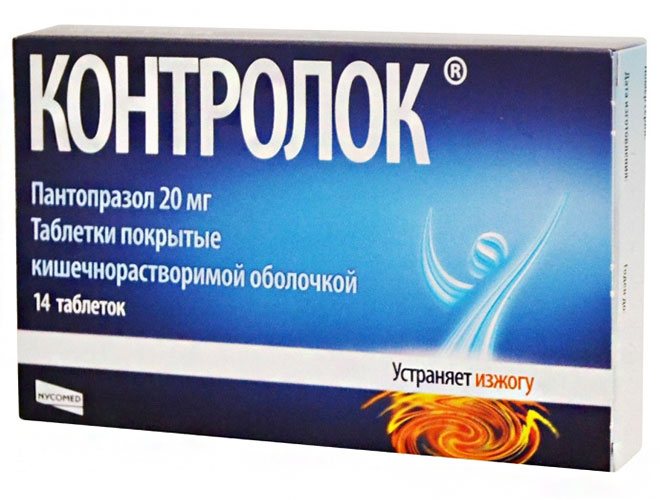
The most common and best analogues:
- Sanpraz;
- Control;
- Panum;
- Peptazol;
- Ulthera.
In addition to these drugs, there are a number of others that are similar to Nolpaza in their pharmacological actions. These include:
- Omez;
- Ultop;
- Zolopen;
- Rabimak;
- Nexium;
- Akrilanz.
When choosing a medication, you should consult with a specialist, he will help you understand what is best to take in a particular case. All these remedies are effective in treating diseases of the stomach and intestines.
The active substance of the drug Ultop, like Nolpaza, is omeprazole. It is worth remembering that there are contraindications when taking Ultop, so it should be taken only after consultation with a specialist.

Ultop medication is prohibited for children under 12 years of age. The patient will not be able to independently determine which of the drugs, Nolpaza or Ultop, will help him better; only a doctor can make this conclusion based on the individual characteristics of the body.
Omez, the active substance of which is also omeprazole, is good for treating the stomach and has an antiulcer effect. The effect of the drug is to reduce the acidity of gastric juice. If you choose between Omez and Nolpaza, the latter begins to act much faster.
Nolpaza and Omeprazole are used in the treatment of intestinal and stomach diseases; both drugs reduce the level of hydrochloric acid. Despite the fact that the medications are effective, it is impossible to replace Nolpaza or Omeprazole with each other in the treatment of diseases without consulting a specialist.
When choosing between Controloc or Nolpaza medications, you should consult your doctor. But we can say with confidence that Controloc is an analogue of Nolpaza, so if Controloc is prescribed, it can be replaced with Nolpaza in the same dosage.
Another remedy with similar effects as Nolpaza is Sanpraz - a good drug for eliminating many diseases. At an appointment with your doctor, you can consult whether you should take Sanpraz or Nolpaza. The products are analogues, they differ only in price.
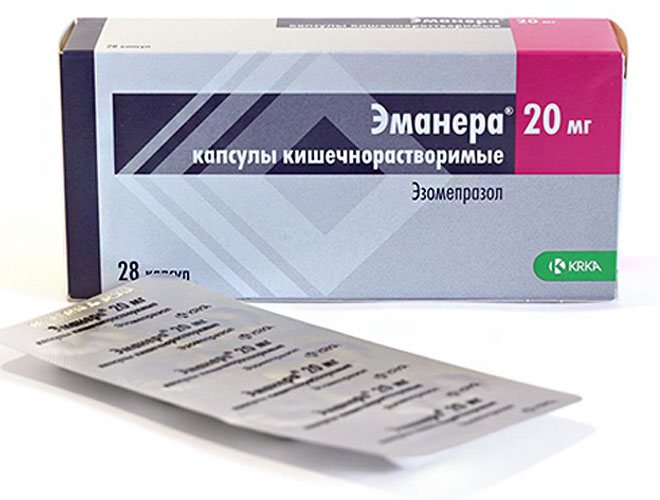
Emanera is also an analogue of Nolpaza. The main substances that make up the medication affect the acidity of gastric juice, as a result of which the patient feels better. Emanera begins to act an hour after application. For most patients, taking Emanera helps in the treatment of various diseases of the stomach and intestines.
Not only these drugs can reduce the level of hydrochloric acid in the stomach, there are others. Such as Kvametel, Ranitidine. Doctors do not prescribe these drugs for the treatment of peptic ulcers. They have more side effects than others. The main difference is that to achieve relief from the patient’s condition, the drugs need to be taken several times a day.
Interesting! Application and indications for use of the drug Phosphalugel
It is worth remembering that the drug Ranitidine is characterized by withdrawal syndrome. Despite this, Ranitidine is prescribed quite often, since some patients may develop an allergic reaction to Nolpaza and its analogues or may not experience improvement. When prescribing a medicine, a doctor always tries to take into account all the characteristics of the patient’s body.

It is because of this that Ranitidine can still be found in pharmacies. Moreover, this drug is quite cheap. It is worth knowing that the doctor will not prescribe drugs from the group of proton pump inhibitors simultaneously with the drug Ranitidine and its analogues.
It is necessary to take into account that the medicine Nolpaza is comparatively cheaper than its analogues, but it treats no worse.
